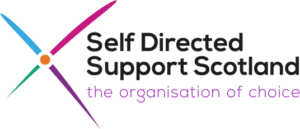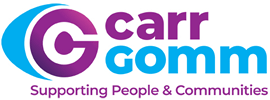Understanding Self-Directed Support (SDS)
Self-Directed Support (SDS) aims to give people full opportunity to take control of their support and their lives. It is for people of all ages who, after assessment, are eligible for social care and support from their local authority.
We want to help you understand and get the most out of SDS, so here’s a seven step guide through the SDS process.
Step 1 – I need support
You or a friend or relative decide that you need support.
Step 2 – First contact
You or another person or organisation contacts your local authority to ask them if you are eligible for support.
Step 3 – Eligibility and Assessment
The local authority will check if you are eligible for support. If you are eligible for support, a professional will look at what kind of support you might need. He or she will talk to you and work with you throughout the process. They will also let you know the expected budget for your support.
Step 4 – Support planning
This step will produce a plan for how you can be supported. During this stage, you will choose how you want your support to be provided, including using the ‘four options’. You can do the plan yourself or you can get help from your social work team member, friends and family.
- Option 1 – You take the money as a direct payment and use it to employ ‘professional assistants’, a support organisation or for equipment and services that help you meet your needs and desired outcomes.
- Option 2 – Either the local authority or another appropriate organisation holds the money but you are in charge of how it is spent in line with your support plan.
- Option 3 – The local authority manages the money and support on your behalf.
- Option 4 – You choose a mixture of the above three options.
Step 5 – Agree on the final plan
You and the professional will agree on the final plan.
Step 6 – Support
You follow the plan and get the support you need.
Step 7 – Review
After a period of time, there will be a review to check if your needs have changed.
We can support you! Contact us today to discuss how you can use your SDS options to select us as your support provider.
We can also put you in touch with local organisations that can give you free, independent information and advice on SDS. Please request this information via our online form.
Our Community Contacts project offers impartial advice, information and support about Self-Directed Support in Argyll & Bute and Highlands. You can find out more about it here.
Below are a few resources which explain more about Self-Directed Support

- The SDS Handbook has information on a wide range of topics, including how to access SDS, your rights and choices, and what words connected with SDS mean.
- Within the SDS Handbook, you can also access the Personal Assistant Employers’ and Personal Assistants’ Handbook.
You can browse the SDS resource library for more useful information.
You can also find information on local organisations that can give you free, independent information and advice on SDS via this link.
Please get in touch at any time via our online form for assistance and advice.
